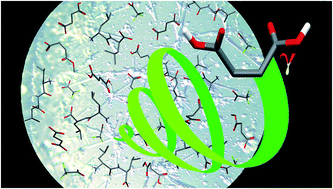A conformational polymorph (γ) of succinic acid was discovered in an attempt to purify a leucine dipeptide by cocrystallization from a methanol solution in the presence of various impurities, such as trifluoroacetic acid. The new γ-form was found to have crystallized concomitantly with the most stable β form. In light of this situation, a crystal structure prediction study was undertaken to examine the polymorph landscape. These studies reveal that the γ polymorph is thermodynamically competitive with the other observed polymorphs; having a more stable folded conformation than the planar crystalline conformation in the β form, but being stabilized less by the intermolecular interactions. Simulations and experiment show that the folded conformation is dominant in solution, but that trapping long-lived crystals of the new metastable polymorph may be challenging. Thus the γ polymorph provides a stringent test of theories for predicting which thermodynamically plausible structures may be practically important polymorphs.
